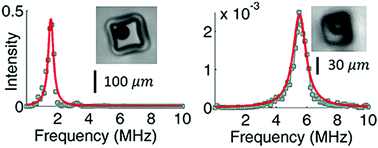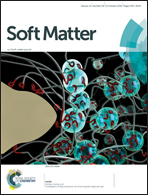The detailed acoustic signature of a micro-confined cavitation bubble
Abstract
Numerous scenarios exist for a cavitation bubble growing in a liquid. We focus here on cavitation phenomena within water under static tension in a confined environment. Drawing inspiration from the natural materials in plants, we design a novel experimental setup where a micrometric volume of water is confined by a hydrogel-based material. We show that, submerging the sample in a hypertonic solution, the water within the cavity is placed under tension and the acoustic emission produced by the resulting bubble nucleation is precisely detected. This new experimental procedure is able to strongly reduce the acoustic reflections occurring at the hydrogel/air interface with more classical techniques. We also propose a mathematical model to characterise the pressure wave emitted in order to correctly take into account the dissipation effect induced by the visco-elastic behaviour of the confining hydrogel. Both bubble resonant frequency and damping are captured by the model and quantitatively match the values found in the experiments.



 Please wait while we load your content...
Please wait while we load your content...